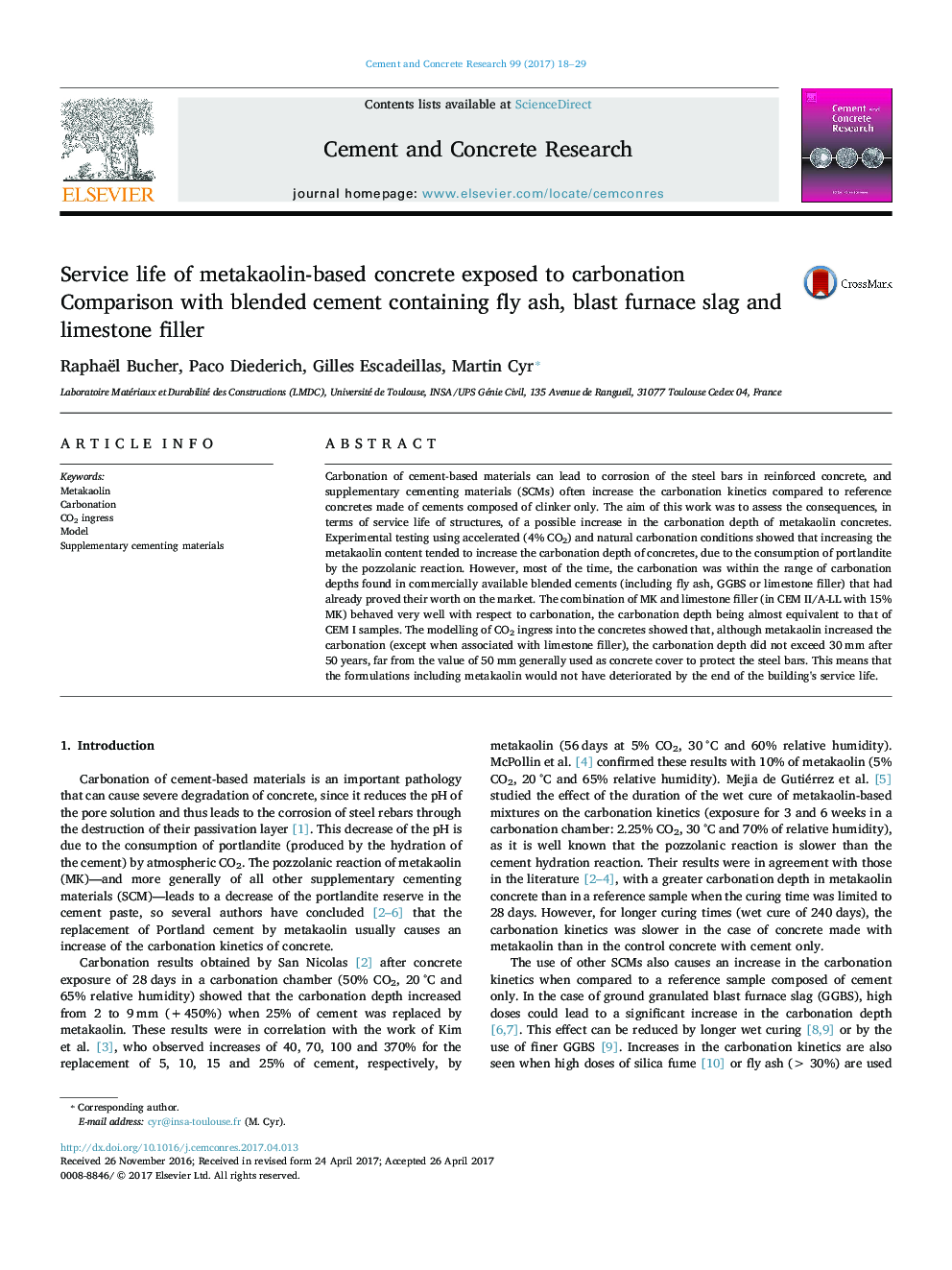| Article ID | Journal | Published Year | Pages | File Type |
|---|---|---|---|---|
| 5437126 | Cement and Concrete Research | 2017 | 12 Pages |
Abstract
Carbonation of cement-based materials can lead to corrosion of the steel bars in reinforced concrete, and supplementary cementing materials (SCMs) often increase the carbonation kinetics compared to reference concretes made of cements composed of clinker only. The aim of this work was to assess the consequences, in terms of service life of structures, of a possible increase in the carbonation depth of metakaolin concretes. Experimental testing using accelerated (4% CO2) and natural carbonation conditions showed that increasing the metakaolin content tended to increase the carbonation depth of concretes, due to the consumption of portlandite by the pozzolanic reaction. However, most of the time, the carbonation was within the range of carbonation depths found in commercially available blended cements (including fly ash, GGBS or limestone filler) that had already proved their worth on the market. The combination of MK and limestone filler (in CEM II/A-LL with 15% MK) behaved very well with respect to carbonation, the carbonation depth being almost equivalent to that of CEM I samples. The modelling of CO2 ingress into the concretes showed that, although metakaolin increased the carbonation (except when associated with limestone filler), the carbonation depth did not exceed 30Â mm after 50Â years, far from the value of 50Â mm generally used as concrete cover to protect the steel bars. This means that the formulations including metakaolin would not have deteriorated by the end of the building's service life.
Related Topics
Physical Sciences and Engineering
Engineering
Industrial and Manufacturing Engineering
Authors
Raphaël Bucher, Paco Diederich, Gilles Escadeillas, Martin Cyr,
